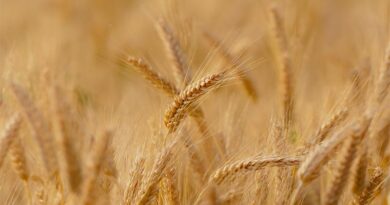Australia: Novel in-season approach may help growers avoid frost damage
02 August 2022, Australia: A new research project is underway to help Australian grain growers protect against or avoid frost damage in wheat, barley and canola crops by varying their in-season agronomic practices.
Frosts are difficult to predict, understand and manage and can have a significant impact on growers, their families and their communities. For wheat alone, it is estimated that frost causes losses to the Australian grains industry of approximately $400 million per year.
Now, a $5.45 million, three-year co-investment between the Grains Research and Development Corporation (GRDC) and a research consortium led by Field Applied Research (FAR) Australia will trial novel in-season approaches, across varying agro-ecological zones and multiple seasons, to provide growers with confidence in adopting new management strategies to mitigate frost risk.
Working across Western Australia, South Australia, Victoria, and New South Wales, the project will explore how crop phenology – the biological life of a plant and how it is impacted by seasonal and climatic conditions – can be manipulated using approaches such as plant growth regulators or mechanical defoliation. It will also examine the crop protection capacity of commercially available products for controlling ice nucleation active bacteria in the three crops.
The project will be led by FAR Australia’s Dr Kenton Porker and includes a multi-disciplinary team of research partners such as the Western Australian Department of Primary Industries and Regional Development, CSIRO, Birchip Cropping Group, Frontier Farming, Living Farm, Mallee Sustainable Farming, EP Ag Research, NSW Department of Primary Industries, South Australian Research and Development Institute, and the University of Adelaide.
Dr Porker said that frost was a difficult issue to solve, and any additional tools growers could use to mitigate frost risk were always well received.
“The key to this project is determining what strategies can be used in conjunction with genetics and development speed to de-risk early sowing (germination),” Dr Porker said.
“We will take this research across multiple agro-ecological zones and identify where and when avoiding frost by delaying development may be a viable option for growers.”
Dr Porker said that avoiding frost by shifting development may not be appropriate for some regions, where the risk of heat was higher, or where avoidance strategies trade off unacceptable growth and yield reductions.
“We have established a great national team, and I think with research on a complex constraint like frost we are at a point where we just need to rule some management tools in or out in good factorial experiments,” he said.
“However, there are some novel aspects to the research and cryoproctectants and agents that inhibit the ice nucleation process on plants; these will be evaluated for their ability to reduce frost stress damage. If successful, this would enable growers to produce crops that flower at times of higher frost risk.”
GRDC manager agronomy, soils and farming systems – west Dr Uys Lourens said that GRDC was continuing to tackle the complex issue of frost damage on behalf of Australian grain growers by investing in research, development and extension.
“This project works towards minimising the direct impact on grain yield and on-farm profitability caused by frost damage across a significant proportion of Australia’s grain growing regions,” Dr Lourens said.
The project will include both field and controlled environment experiments and will be run over three seasons. Results will inform growers on the opportunity and value of adopting these additional in-season agronomic practices for frost damage avoidance.
Also Read: Top 7 Tractors in India from 20 HP to 60+ HP















